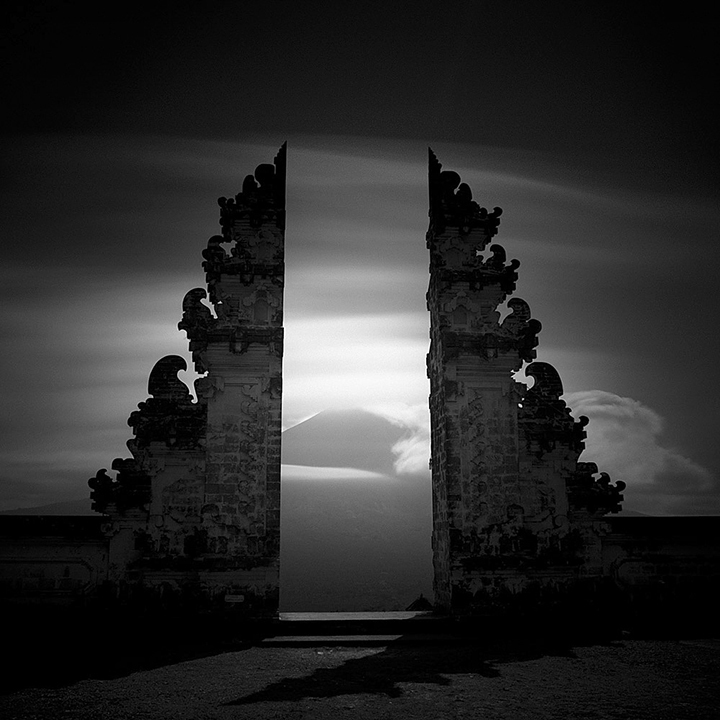
R
E
V N
E
X
T
A photograph can be seen as a transparent window to an objective world, but it can also be seen as a mirror of the private, inner psyche of the artist. For Indonesian photographer Hengki Koentjoro, his love of nature found the perfect outlet for self-expression—through the lens of a camera. Allowing him to discover and be close to the world surrounding him, Koentjoro describes his passion as such: “. . . it helps me get my sanity back. The ocean and mountains in particular have that mystic power that I look up to deeply. Living in Indonesia is
a blessing. . . ”
Born in Semarang, Central Java, Koentjoro’s interest in photography began at age 11 when he was gifted a Kodak pocket camera from his parents. The camera not only served as a springboard for his imagination in his formative years, it eventually motivated him to enroll in the Brooks Institute of Photography in Santa Barbara, California. During his studies, Koentjoro discovered the works of one of the world’s visionary figures in nature photography, Ansel Adams (1902–1984), whose black and white images of landscapes have inspired a great many photographers and environmentalists.
Koentjoro was particularly impressed by Adams’s working method called the “Zone System,” which has been written extensively by Adams as well as other practitioners. His two volumes, “The Negative” and “The Print” from 1983 are a bible of sorts to many photographers—an important reference text in achieving control and an indispensable guide to visualization. Adams was a staunch believer in “pre-visualization,” whereby one must see the picture before one makes it, and the Zone System is a disciplinary tool in facilitating this act. By placing the subject and each of its surrounding elements within the frame to a specific chosen shade of gray, and through the precise control of exposure and the processing of the negative, the resulting work would be a close approximation of the image pre-visualized in the mind’s eye of the photographer. Adams has often compared the film negative to a composer’s score, and the photographic print, the performance.
While Adams’s technique has aided Koentjoro in bringing his personal vision to the fore, Koentjoro attributes his compositional understanding to the Lancashire-born photographer Michael Kenna. “His sense of composition is second to none and his ability to create minimalist photography gave the impression that less is more,” explained Koentjoro in our recent conversation.
Photographs from Koentjoro’s oeuvre such as “Sparse” (2009); “Decay” (2014) and “Bird Notes” (2005) illustrate this perfectly. The exquisite placement of the subjects in his photographs complements the visual stillness and implied silence radiating from the images, conveying an almost easy oversight into the powerful force of nature in its simplicity.
Last year, Germany’s Galerie Vevais published Koentjoro’s monograph. Titled Vevais-Werkdruck #38, the book presented a retrospective survey of his works to date. However it would be misleading to confine Koentjoro’s works with nature purely to landscapes and skies. His vision extends much further beyond the earth and soil. In October this year, Koentjoro released his book, Monohydra, produced by Jakarta’s own publishing house, Afterhours Book Publishing. A first of its kind, Monohydra features the beautiful underwater world of Indonesia’s waters in sensual black and white. At present, Koentjoro is underway producing a book centered on looking into the relationship between mangrove trees and global warming.
Billy Kung is photo editor at ArtAsiaPacific.



